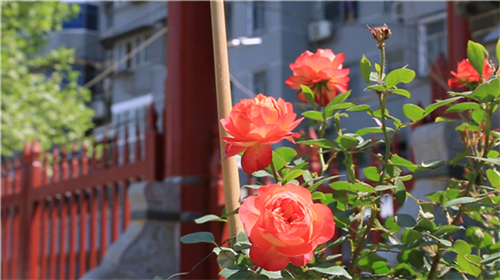豹纹守宫为什么会烂尾?说下起因和治疗(生肉 未翻译)
Reptile owners must constantly be on the lookout for signs your lizard may not be doing well.
Tail rot is one condition which can lead to serious illness if left untreated.
Your leopard gecko may give very few indications they are suffering, so you need to familiarize yourself with the symptoms these fat-tail geckos display to seek treatment early on.
Tail rot is marked by discoloration of the tail. The skin will turn dark, dry, and leathery with no feeling in the affected area. A vet must handle treatment and usually results in surgery and medication. The best thing to do is prevent tail rot from developing in the first place.
Educate yourself on this condition and the treatments to help keep your favorite reptile happy and healthy.
Prevention is key, and this breakdown will help you get the healthiest leopard gecko.
What Is Tail Rot In Leopard Geckos?Tail rot is a common condition affecting the tail of your leopard gecko, but it can lead to a more systemic illness if left untreated.
Some people also refer to this condition as tail necrosis because the tissue on the tail is dying.
If you notice any of the symptoms of this disorder, you need to pay attention.
A trip to the veterinarian is likely to properly diagnose your gecko.
The most prominent symptom of an infected gecko is discoloration of the tail.
It frequently turns black or brown as the infection begins.
The affected area is going to be relatively dry with a leather look to it.
You may notice your leopard gecko has no feeling in these discolored areas.
The tail may break easily in these parts though you shouldn’t attempt to break it off on your own.
A veterinarian may remove the affected parts of the tail, but it should be done under anesthesia and with the help of painkillers.
Remember, sick geckos are different from those who are having a healthy shed.
Shedding is usually done all in one piece instead of in multiple smaller pieces.
The latter could be a sign your gecko has some underlying health issues.
Once you know how to spot tail rot in your leopard gecko, you need to know what might be causing the problem.
Common causes can include:
Trauma or infection in the tail
Blood clots in the tail preventing blood flow
Abnormal shedding
Hypothermia
Insect bites
Cysts or abscesses
In many cases, the only way to deal with tail rot is to take your infected gecko to the veterinarian.
They can properly diagnose and treat your reptile’s condition to prevent the illness from becoming worse and spreading to the rest of your gecko.
Leopard Gecko Tail Rot TreatmentsOnce your leopard gecko has contracted tail rot, there is not much left to do to treat it.
You have just a couple of options, and both require veterinary care.
Be sure to take your reptile to a vet who specializes in exotics or reptiles.
A typical small animal veterinarian may not have the experience or tools to properly treat a small reptile.
While this can certainly be an expensive endeavor, medical attention is necessary to help treat this condition in reptiles.
SurgeryUnfortunately, the best thing to do to cure tail rot is to eliminate it.
These bacterial infections are stopped in their tracks by eliminating the issue at the source.
A veterinarian will place your leopard gecko under anesthesia and intubate them.
They will also anesthetize the tail to minimize your gecko’s discomfort with the procedure.
They will either cut or break off the tail just above the infected part, so all black or brown areas are removed.
They might stitch the wound shut to prevent debris from the cage from getting into the wound and causing a secondary infection.
These sutures will need to be removed after a few days to allow the tail to regrow.
Tail loss in leopard geckos doesn’t have to be a big deal.
Most healthy geckos will be able to regrow their tail within a month or two.
This amputation of unhealthy tissue puts a stop to further spread of the tail rot, and the tail will eventually regrow.
It may be uncomfortable for your leopard gecko initially, but it will ultimately be the best treatment.
MedicationAfter the surgery, your veterinarian is likely to prescribe your gecko a few medications.
First, they might prescribe painkillers to help get your pet lizards through the discomfort of the surgery.
You probably won’t have to give these painkillers for more than a few days.
In addition, they are also likely to prescribe a round of antibiotics.
Reptile pets can take these antibiotics to minimize the risk of infection following the procedure.
There is a good possibility tail rot can lead to a systemic infection.
These antibiotics are given to prevent the spread of the infection even after the amputation.
Most of the time, you will need to administer these antibiotics for about thirty days.
Changes To TerrariumOnce the unhealthy tissue has been removed from your gecko, you will need to ensure you keep the incision healthy so the tail can regrow.
There are a few things you need to do or change within the terrarium to keep your reptile healthy and give them the best chance of regrowing their tail.
The first thing you need to do is ensure you are keeping the tail stump clean.
You want to do everything to prevent a secondary infection from taking over the tail.
Once the sutures are removed (if your veterinarian used them), make sure to apply antibiotic ointment or betadine to the stump.
This wards off infection and makes it more likely the tail will regrow quickly.
As a secondary measure to ensure the tail does not get infected, you need to replace the substrate in your terrarium.
Loose substrate can easily get caught in the wound, so you will need to replace it with paper towels for a while.
A leopard gecko’s tail is a huge source of fat for them.
Without the tail, they cannot tap into the fat reserve when they are hungry or need energy.
It is best to increase their food for the next few weeks.
Make sure to feed them more foods higher in fat to make up for what they lost when the tail had to be amputated.
How To Prevent Tail Rot In Leopard GeckosOnce tail rot takes hold, there isn’t much you could do about it.
The best thing to do is to prevent the conditions for it to develop in the first place.
Taking good care of leopard geckos goes a long way toward preventing this illness from taking hold.
Here are a few tips to help you take better care of your gecko.
Purchase A Healthy Leopard GeckoThe first thing you need to do is ensure you are purchasing a healthy gecko.
While it is possible to get healthy pets from your local pet store, many people prefer to look for breeders.
Breeders are more familiar with the common ailments which may befall a leopard gecko.
You may have greater success purchasing a healthy lizard from a breeder than from pet store staff who may not know what to look for.
When you go to purchase your leopard gecko, make sure to inspect them for signs of tail rot.
Maintain The Proper HeatingHypothermia is one of the leading causes of tail rot in leopard geckos.
Making sure you have the proper heating in place can eliminate this potential health hazard.
Always take the temperature in your gecko’s terrarium.
The cool side of your terrarium should be between 75 and 80° degrees Fahrenheit (27° C).
You also need to have a warm side ranging from 80 to 85° degrees Fahrenheit (29° C).
Leopard geckos need an even warmer area where they can bask.
This spot should be the warmest area of the entire enclosure, with temperatures ranging from 90 to 95° degrees Fahrenheit (35° C).
With the proper temperatures maintained, your gecko should not have to worry about hypothermia.
Proper SheddingMany reptile owners have a hard time resisting when it comes to helping their lizards shed.
It might be tempting to help them peel off their old skin, but you want to refrain from doing this.
Improper shedding is a leading cause of developing tail rot.
Your leopard gecko is more than capable of getting their shed off all on their own.
If you notice your gecko having a hard time with their shed, help them loosen it by placing them in a sauna.
Take a small container and poke air holes in it.
Line the bottom with paper towels and add a splash of warm water.
The water should come up over the paper towels but only by a small amount.
Too much water can make your gecko struggle to keep their head above the water and can cause them to drown.
Allow your gecko to splash in the warm water for about fifteen to twenty minutes.
This time spent soaking should loosen up the stuck shed and help it to come right off. It should come off with little to no help from you.
Attempt to brush it off, but if it sticks, do not pull, or you might cause more damage to your leopard gecko.
If the shed remains stuck, give them another sauna the next day to loosen it up again.
Eventually, this should result in the stuck skin giving way.
Keep The Enclosure SafeHave you noticed your gecko could get injured on parts of their enclosure?
Trauma and injuries have the potential to lead to tail rot, so it is best to eliminate any and all safety concerns from the enclosure.
This can mean removing toys and sharp objects, even if your gecko seems to really enjoy them.
It is not worth the risk of incurring trauma and developing tail rot.
If you are housing more than one leopard gecko in your enclosure, you may want to consider splitting them up.
A fight between them over resources or space can lead to trauma.
This trauma could then lead to tail necrosis.
Most of the time, you are able to house leopard geckos together.
However, if you notice they aren’t getting along anymore, you might want to consider splitting them preemptively.
Clean Your EnclosureWhen is the last time you thoroughly cleaned out your leopard gecko’s enclosure?
A dirty cage may not be the leading cause of tail rot, but it can lead to an infection.
Soiled cages become a breeding ground for insects and other pests.
When these bugs come to inhabit the terrarium, they do not always exist peacefully with your gecko.
They may bite, which can lead to tail necrosis.
Start by spot cleaning the cage on a daily basis.
If your leopard gecko had a bowel movement, you would want to remove this right away.
Otherwise, you only need to do a thorough cleaning of the cage about once a week.
If you use loose substrate, you might want to consider placing it with a fresh covering at the end of the week.
Take this time to wipe down the cage with a safe solution, including all basking rocks and hides.
For those who use paper towels, they need to be replaced every few days.
Consider swapping them out about twice each week.
Carpets should be washed about once a week as well.
Contact The Vet ImmediatelyIf you suspect your leopard gecko may be developing tail rot, the best thing to do is to contact the veterinarian immediately.
By catching it early, you could prevent your gecko from losing his entire tail or developing a systemic illness.
While a trip to the vet could be a bit expensive, it is best to catch the condition early.









